
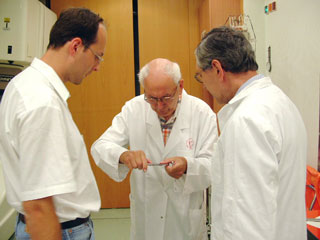
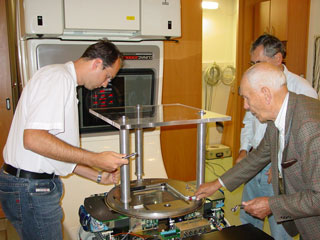

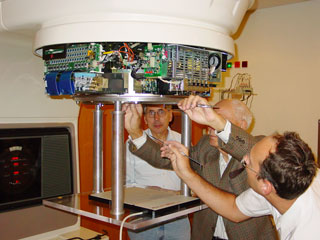
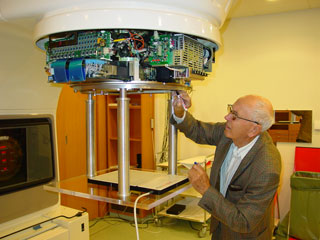

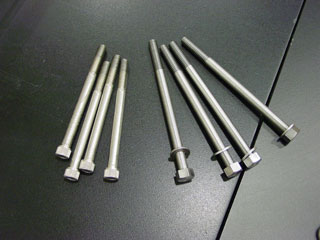
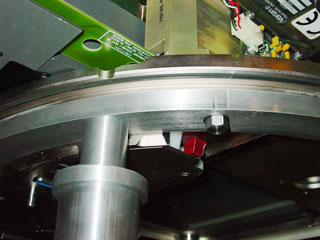
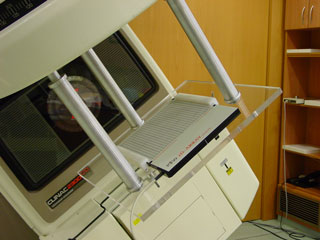

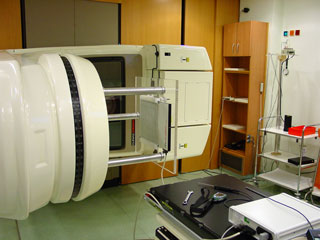
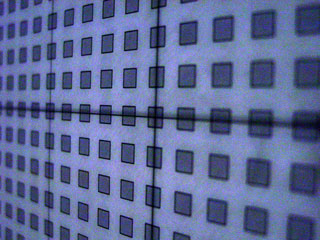
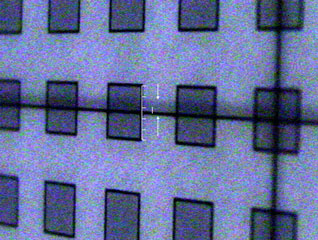
The G-Stage is used for all linac checks according to the Standard ONORM S5290 that require beam performance measurements at nonzero Gantry angles.
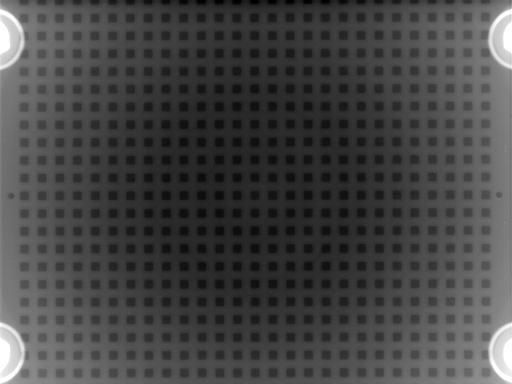 |
Port image taken with aS500 of the G-stage with mounted 2D-ARRAY. Note the four aluminum cylinders which are several cm behind the ARRAY. |
For constancy checks, the MultiCheck software can be used. Fig.15 shows a test field of 26x26cm at Gantry 0°. With respect to the reference measurement (not shown), the overall field size is a little smaller, indicated by the light blue shading in the area "Deviation from Reference".
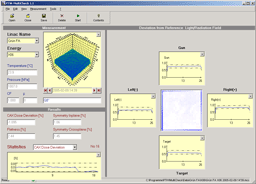 |
 |
Fig.15: A 26x26cm field at Gantry 0°. |
Fig.16: The same field at Gantry 180°. |
Fig.16 shows the same field after repeating the measurement at Gantry 180°. The margin zone area is now light red, indicating higher dose compared to the reference. This could be due to some play in the jaws. If the jaws open up a little, field size increases and the margin zone chambers receive more dose. Note that in the Margin zone area, 0.1% is set to maximum color. The effect is so small that it could probably not be detected with film.